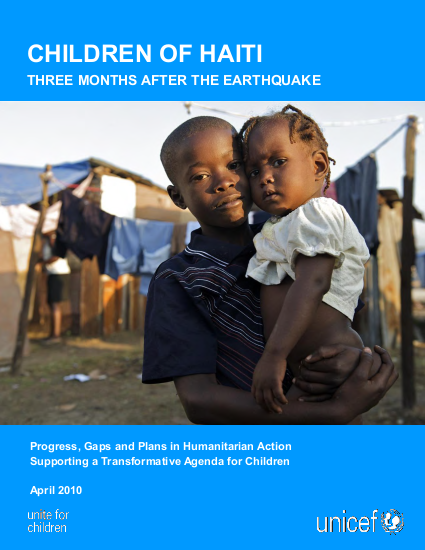
The December 2004 Indian Ocean earthquake off the coast of Indonesia triggered a massive tsunami that spread throughout the Indian Ocean, leaving nearly 230,000 dead or missing and devastating communities. In response, the international community provided assistance on an unprecedented scale, with in excess of USD 14 billion pledged for the relief and recovery of tsunami-affected countries - with over USD 5.5 billion of this coming from private sources, such as individuals and organisations1.
The tsunami caused immense social, economic and environmental devastation to already poor areas, which in some contexts also had been weakened by years of conflict, and highlighted long-standing disparities of affected populations. While UNICEF's initial response aimed to address the immediate humanitarian needs of those affected by the tsunami, there was also an opportunity to strategically address some of the gaps in access to basic services and other forms of marginalisation, such as populations affected by conflict and/or other forms of discrimination (for example, through HIV and AIDS programmes). In Indonesia, for example, UNICEF strategically targeted both tsunami- and conflict-affected populations in Aceh, with the aim of consolidating peace and the understanding that not doing so would create a potentially unsolvable disparity in access to services.
